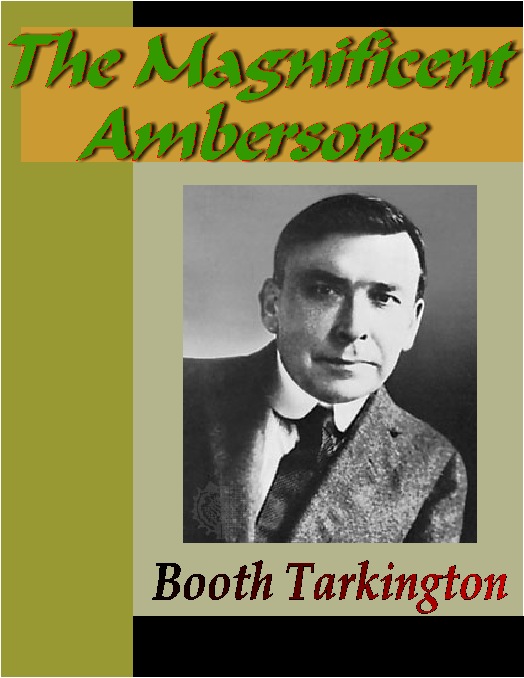This 1919 Pulitzer Prize-winning novel of the well-heeled Amberson family details their descent from a position in the moneyed aristocracy to the realms of the working class. The protagonist, George Amberson Minafer, was coddled by his parents and grandparents who excused his purposeful indiscretions and refused him nothing. He grew up arrogant and demanding, assured of inheriting the executive duties of his grandfather's business. Yet he had no interest in the management of those responsibilities, and any professional ambition to become the director of the financial affairs was not his desire. His only intent was to spend the rest of his life as a constituent of the idle rich. But while he attempted to maintain his prestige and possessions, his life could not remain static. Around him small towns became cities during the Industrial Revolution, real estate developers turned the land into factories and manufacturing empires that paralleled the upswing of commercial endeavor. Tarkington wanted to convince the reader that even though technological change hadn't necessarily made life better, it also hadn't made it worse. George and his family viewed this situation as loss but others saw opportunity in it. Still, George could bring himself to recognize the fact that he and his relatives had become unconnected to the zealous growth of the United States. When George's grandfather died he understood too late how the acquisition of material goods was a worthless lifetime pursuit. So the Ambersons discovered that their investments had been exhausted as the industrial trends slowly but certainly drove them out of the city.
- Available now
- New eBook additions
- New teen additions
- Most popular
- Try something different
- Deaf Culture and ASL
- Adult New Readers
- See all
- Hot and Trending Listens
- New audiobook additions
- New kids additions
- New teen additions
- Most popular
- Try something different
- Available now
- Quick listens
- Read by a Celeb
- Audiobooks for the Whole Family
- Best for Short Drives
- 2023 Audies Award Nominees
- See all
- Home & Garden
- Most popular
- Crafts
- Lifestyle
- Health & Fitness
- Cooking & Food
- Fashion
- Try something different
- Celebrity
- Tech & Gaming
- Cars & Motorcycles
- Family & Parenting
- Sports
- See all

